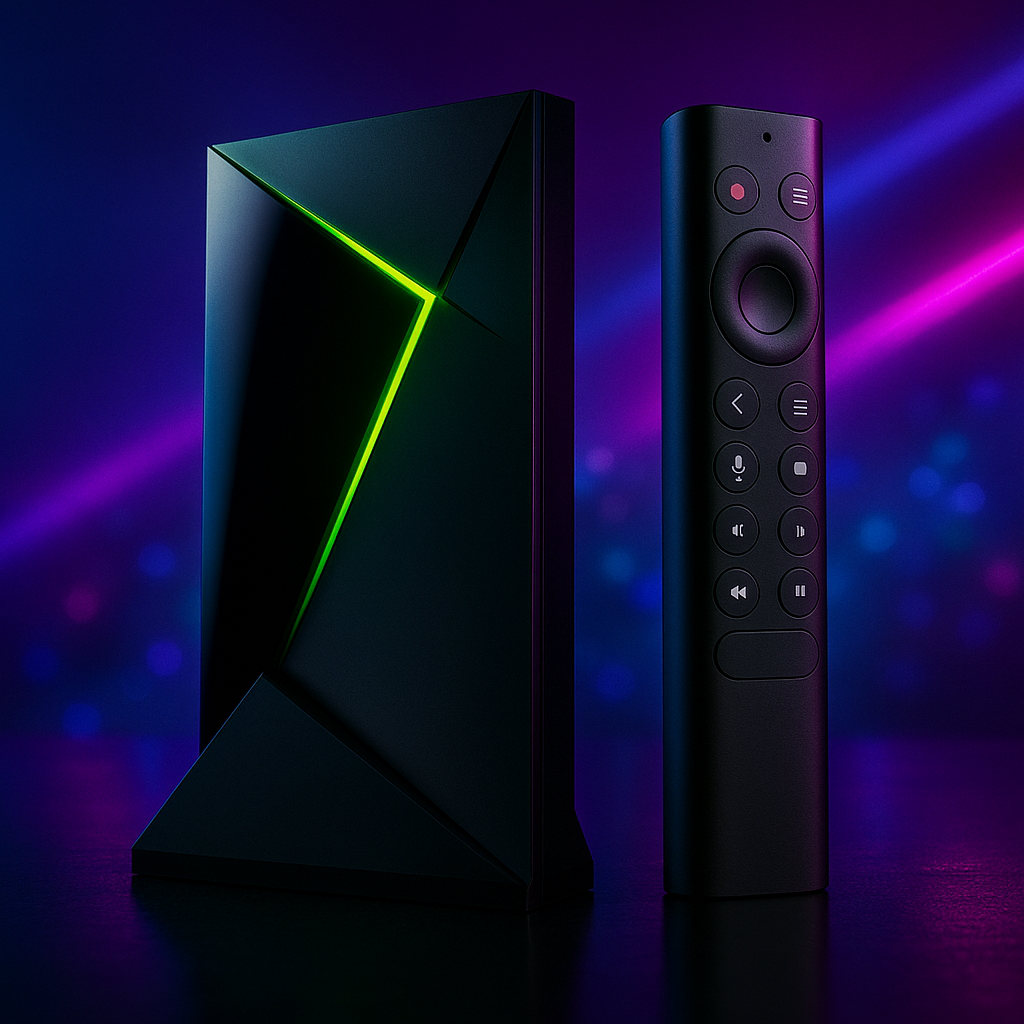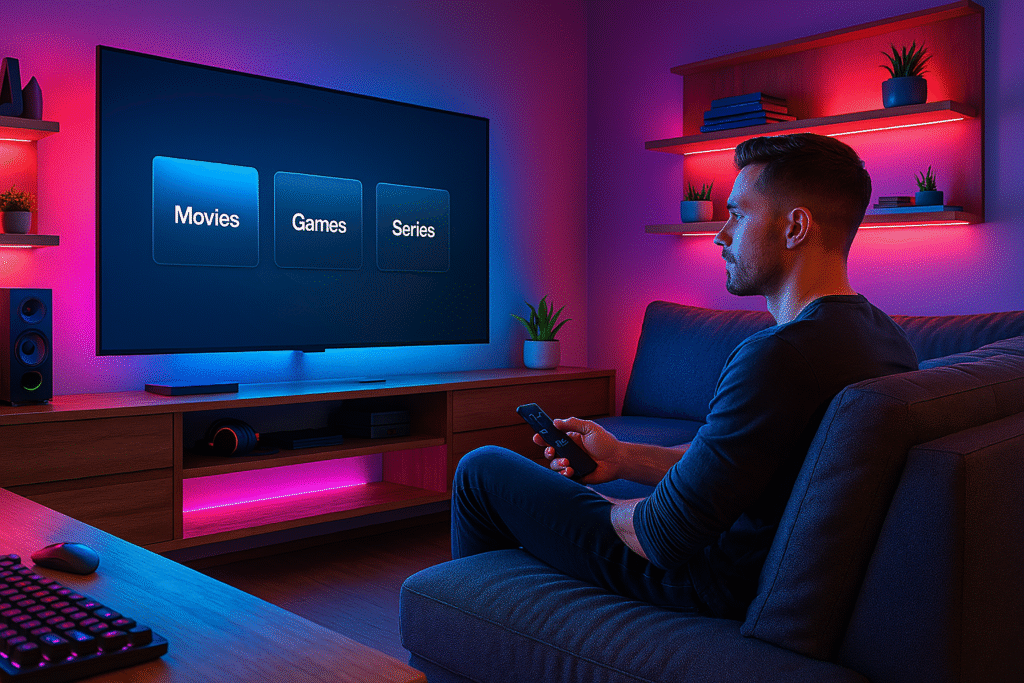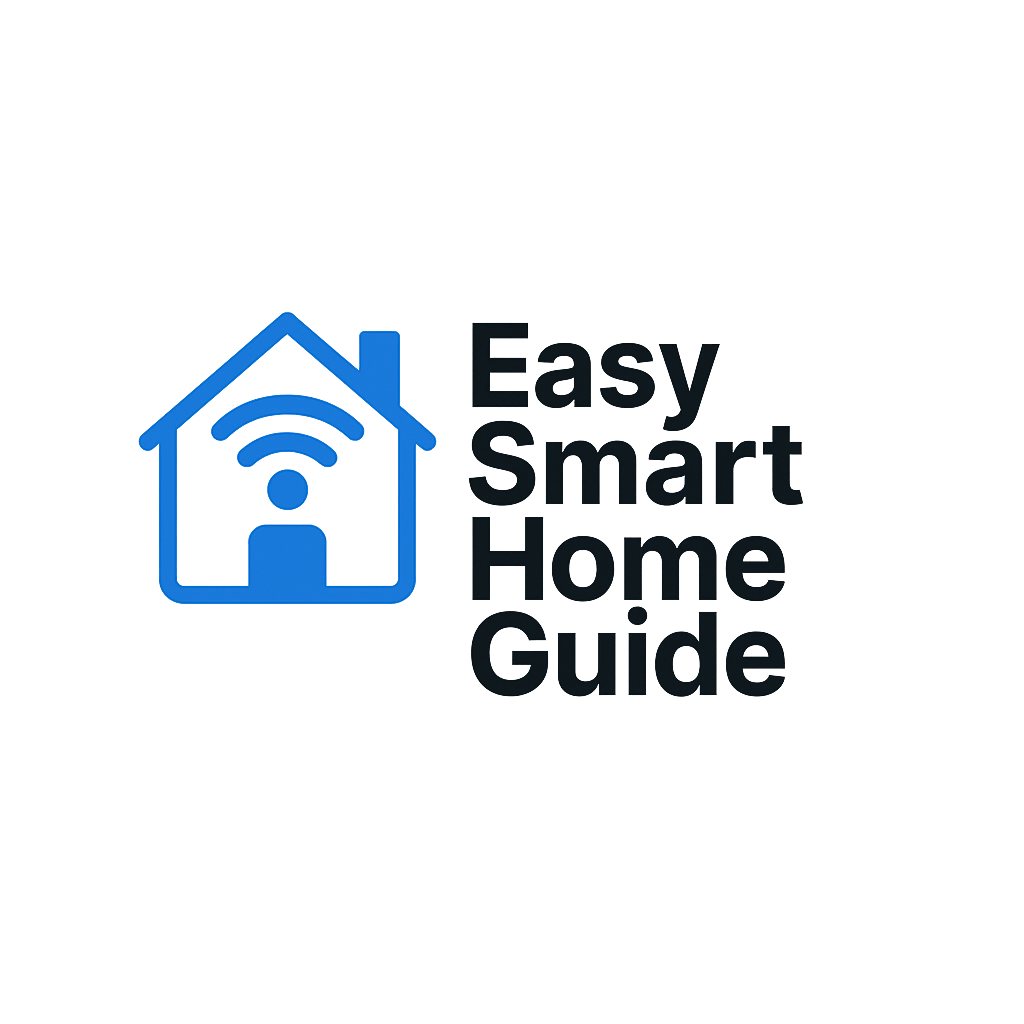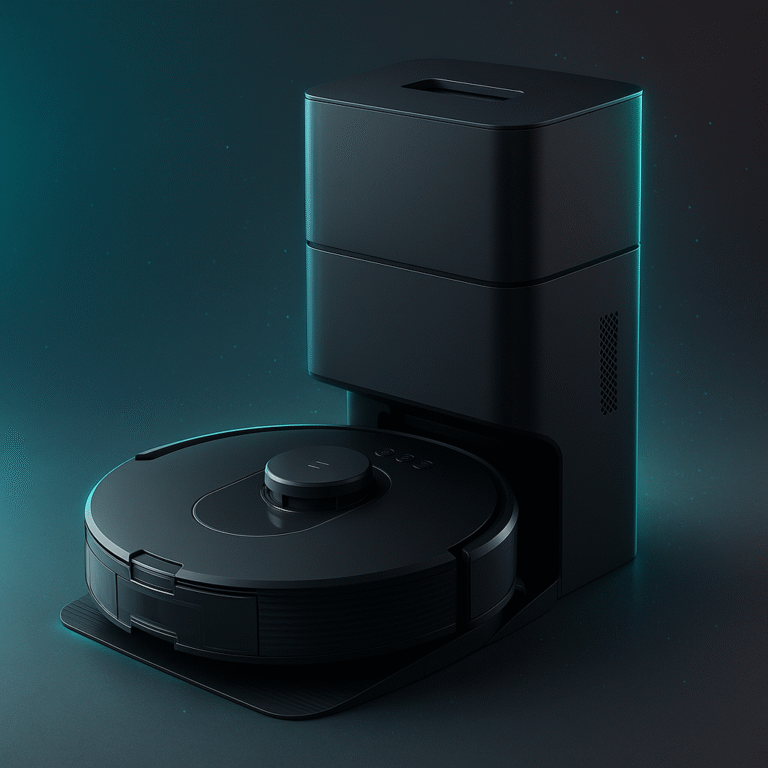NVIDIA SHIELD Android TV Pro: The 4K Smart-Home Powerhouse You’ve Been Waiting For

This image has been generated using AI for illustrative purposes only and does not represent an actual product image
Last updated: August 3, 2025
Imagine settling in for movie night and saying, “Hey, Google, launch Dolby Vision,” and instantly your smart lights dim, the audio system switches to Atmos, and your 4K HDR film begins. That’s the magic of the NVIDIA SHIELD Android TV Pro—a streaming device that doesn’t just stream, but plays nicely with your entire smart‑home and even handles games via cloud or local PC.
Think of this as a conversation between knowledgeable tech‑enthusiasts over coffee—not a spec sheet. Let’s explore why the NVIDIA SHIELD Android TV Pro remains an unbeatable hybrid of entertainment, automation, and performance.
Features That Define the NVIDIA SHIELD Android TV Pro
Built on the Tegra X1+ system-on-chip (the same Maxwell‑based SoC found in the Nintendo Switch), the Shield TV Pro delivers solid performance with 3 GB RAM and 16 GB flash storage, expandable via USB 3.0 or microSD (turn0search17turn0search22). It supports 4K HDR playback at 60 fps, including Dolby Vision and HDR10 decoding, and offers seamless AI‑enhanced upscaling that intelligently sharpens lower resolution content to crisp 4K (turn0search21turn0search9).
The device includes two USB 3.0 Type‑A ports and gigabit Ethernet, plus built‑in Wi‑Fi 802.11ac and Bluetooth 5.0 connectivity. Audio formats supported are extensive—Dolby Atmos, Dolby TrueHD, DTS-X pass‑through, and high‑res playback up to 24‑bit/192 kHz via USB or HDMI (turn0search0turn0search19).
Gaming is built into its DNA: GeForce NOW cloud gaming is native, and local GameStream from a PC works via compatible Nvidia GPUs. The system also supports retro emulation via sideloading and the dedicated Shield Store ecosystem. It’s the Swiss Army knife for cinephiles and gamers alike.
How the NVIDIA SHIELD Compares to Competing Devices
In Tom’s Guide’s 2025 roundup, the Shield TV Pro stands out as the top Android-based media device, especially for gaming and high-end streaming needs—not a budget pick, but a premium tool for enthusiasts (turn0news14).
Compared to Google’s newer Google TV Streamer, the Shield remains unmatched in audio passthrough, customizable storage options, and legacy Android flexibility—though the Streamer offers newer OS support and larger built-in storage, Reddit users debate which is better for long-term value (turn0search5). Shield retains edge in CPU overhead for AI upscaling and retro gaming performance.
Versus Roku Ultra or Fire TV Stick 4K Max, Shield gives more physical connectivity and full Android freedom with sideload apps—though Roku Ultra scores better on interfacelessness, and Amazon’s stick may embed more streaming subscriptions and lower price. Still, for tinkerers and local media lovers, Shield is in a class of its own (turn0news15).
Price and Accessibility: Is the SHIELD Pro Justifiable in 2025?
The NVIDIA SHIELD TV Pro (2019 model) currently retails for US $199.99, offering reliability beyond its years and ongoing ecosystem support despite no hardware refresh since 2019 (turn0search2turn0search11). While newer Android TV boxes like the Mecool KM9 Pro Max cost under $70, they lack Dolby Vision, Atmos, AI‑upscaling, and expansion ports that make Shield a pro-level device (turn0news16).
Available at Amazon and major retailers with consistent stock, this model appeals to long-term users—macOS or Windows streaming professionals, Plex media server hosts, and gamers who need GeForce NOW or GameStream support (turn0search11).
Although it’s no longer on the bleeding edge, the Shield’s ongoing compatibility with streaming services, its reputed longevity, and its user-modifiable Android interface continue making it a standout option for power users (turn0search3).

This image has been generated using AI for illustrative purposes only and does not represent an actual product image
Real Benefits and Drawbacks That Matter
On the plus side, Shield TV Pro handles AI-enhanced 4K upscaling incredibly well, even improving older HD movies and YouTube streams. User feedback on forums praises its Plex media server capabilities, flexibility for sideloading apps like RetroArch, and strong audio passthrough quality—including Dolby Atmos or DTS-X for users with advanced sound systems (turn0search8turn0search12).
Its extensive ports let media hoarders connect drives or create a local media hub—features missing on minimalist sticks. It runs Android TV 11 but still receives security updates and remains the go-to for modders and enthusiasts (turn0search10turn0search5).
Downsides: no HDMI 2.1 (only HDMI 2.0b), ethernet only on Pro model, outdated OS interface against Google TV, fewer built‑in updates since 2022, and it’s more expensive than mainstream sticks. It doesn’t support HDR10+, and GeForce NOW requires a paid subscription for best quality. For casual users who don’t sideload or host media, the cost can feel tough to justify (turn0search12turn0search11).
Real-Life Scenarios: How People Use Shield Today
On Reddit, enthusiasts say:
“I just purchased one… Nvidia Shield is a lifesaver. So good. I’d say yes, it’s brilliant in 2025. Just got a big software update.” (turn0search1)
Another shares success streaming personal NAS video files via Plex using Shield’s USB and AI upscale features. And tech-minded users confirm the old Tegra X1+ chip holds up well under retro and cloud gaming workloads (turn0search8).
For one user, Shield replaced their need for separate home theater PC; it streams, decodes, and plays games with zero fuss in their living room.
Smart Stats That Support the Shield’s Value
In TechRadar’s 2025 ranking of Android boxes, Shield TV Pro earns top marks for its 4K HDR performance and gaming support, despite no newer hardware since 2019 (turn0news14).
User reviews emphasize performance reliability and upscaling as standout features. Although no Statista listing exists for Shield specifically, experts consistently position it as the gold standard in Android streaming hardware for home theater and power users.
Looking Ahead: Why Shield Still Fits in Smart Homes of 2025
While Shield doesn’t support Matter or Thread oggi, its flexibility in running Google Assistant and Alexa via voice remotes or hubs keeps it a solid smart‑home partner. Future firmware updates could improve UI and streaming support, and legacy compatibility ensures it works with Plex, emulators, and niche apps.
No confirmed next-gen Shield model is currently on the horizon, making this 2019 model a long-tail favorite for those who don’t need bleeding‑edge OS updates—just rock‑solid media and automation control.
Is NVIDIA SHIELD Android TV Pro Right for You?
If you want flexibility beyond streaming—a device that plays games, runs media servers, supports Dolby Vision/Atmos, and gives options for retro apps or storage expansion—Shield is still unmatched.
But if you’re after simplicity, minimal price, and auto‑updates without tinkering, Roku Ultra or Google TV Streamer may be more attractive. Shield rewards users who customize and value durability over flashy UI changes.
Friendly Takeaway
The NVIDIA SHIELD Android TV Pro is more than a streamer—it’s a cinema‑grade hub for users who demand high fidelity, local media control, gaming access, and smart home potential. It may be aging, but it’s aging like fine hardware. Plug it in, let it live under your TV, and enjoy the confidence that your media and smart‑home future is well covered.
Explore More
Related posts:
- Amazon eero Pro 7 Tri-Band Mesh Wi-Fi 7 Router Review: Speed, Coverage, and Simplicity in One Amazon eero Pro 7 Tri-Band Mesh Wi-Fi 7 Router Review:...
- Ring Battery Doorbell Pro Review: Head‑to‑Toe HD+ Vision With No Strings Attached Ring Battery Doorbell Pro Review: Head to Toe HD+ Vision...
- Google TV Streamer 4K: The Next Evolution in Smart Home Entertainment Google TV Streamer 4K: The Next Evolution in Smart Home...
- Apple TV 4K 3rd Generation: Unlocking the Future of Streaming and Home Automation Apple TV 4K 3rd Generation: Unlocking the Future of Streaming...



